Building a large-ish model railroad, often necessary projects crop up that I lump under the term “infrastructure”. This is the un-sexy non-model railroad stuff that gets glossed over in the hobby press, and is usually covered in one short sentence in layout articles: “After prepping the basement, construction began on the X,Y & Z Railroad”.
Well.
“Room prep” covers ALOT of ground, and often involves ALOT of grunt labor. But, if the owner wants to have a comfortable, warm, well-lit space to work in, and for visitors to enjoy, that work has to be done.
Sometimes “infrastructure” projects become necessary well after railroad construction has begun. Case-in-point: Our NMRA Division (MCR Division12) had layout tours for members this past November. During the tour, I suddenly realized that many of our members are a bit older, and several have a bit of a “hitch in their giddy-up”, so to speak. This resulted in some difficulty navigating the stairs to the basement, as there was no handrail for about 2/3rds of the way. This was not something that had ever been a problem for the family, but for some visitors it obviously was. Besides, it really was not up to code. Thus, putting in a handrail became top priority before the next op session:
Another order of business was getting Wi-Fi clocks installed around the railroad. The S&NY runs on 1:1 time during op sessions, but the timetable begins at 7:30PM. This was done as most of the early sessions were Saturday evenings, and the crew just used their watches or phones to keep track of the time. The problem was that if there was a glitch that put a halt to ops for a period of time, the timetable and schedule would get out of whack with “real time”. Afternoon sessions were also a problem, in that a totally different timetable had to be used.
Enter Wi-Fi clocks from Model Railroad Control Systems: Wi-Fi Clocks. Finally, a perfect solution! I purchased 3 analog-style clocks, hooked everything up per the instructions, and everything worked perfectly! I put the clocks where at least one clock would be visible from anywhere on the layout. Another “infrastructure” project complete:
As op sessions progressed, it became increasingly apparent that some method had to be devised to allow crews to “OS” (i.e. notify the dispatcher) when they passed a station. I wanted a solution that would be relatively authentic without being cumbersome for the crews, and I hate FRS radios and headsets. Once again, MRCS came to the rescue: Model railroad telephone systems. While not exactly inexpensive, the phone system is easy to use and relatively authentic. Two op sessions has proved the money well-spent. Seth Neumann at MRCS was extremely helpful with advice and instructions on getting the system installed and operational. The downside was several hours spent underneath the layout with a headlamp, pulling CAT-5 cable. Another unglamorous “infrastructure” project complete: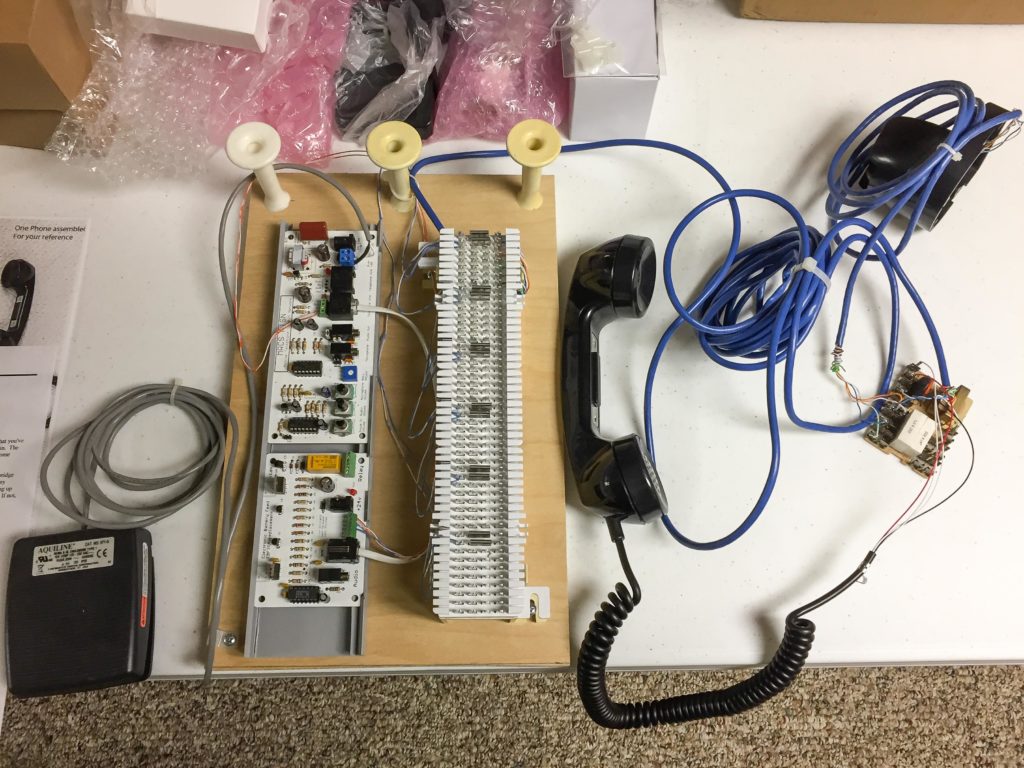
The last project is a minor one, but one that had been bugging me for a while. I used the car-card boxes to hold pencils and uncoupling picks, but the boxes aren’t really deep enough to keep the pencils and picks from flipping out onto the floor. So, over the holidays I picked up a scrap length of PVC pipe and some endcaps from the local hardware store and made pencil and pick holders for all of the station areas. A couple of quick whacks with the chop saw and some hot glue, voila!:
Another small “infrastructure” problem checked off.
Again, none of these things were very sexy, but they all add up to benefit operator comfort, safety, and ease of use. So, that’s what I’ve been doing on the railroad for the past 6 months or so. Looking forward to more actual railroad modeling this Spring!
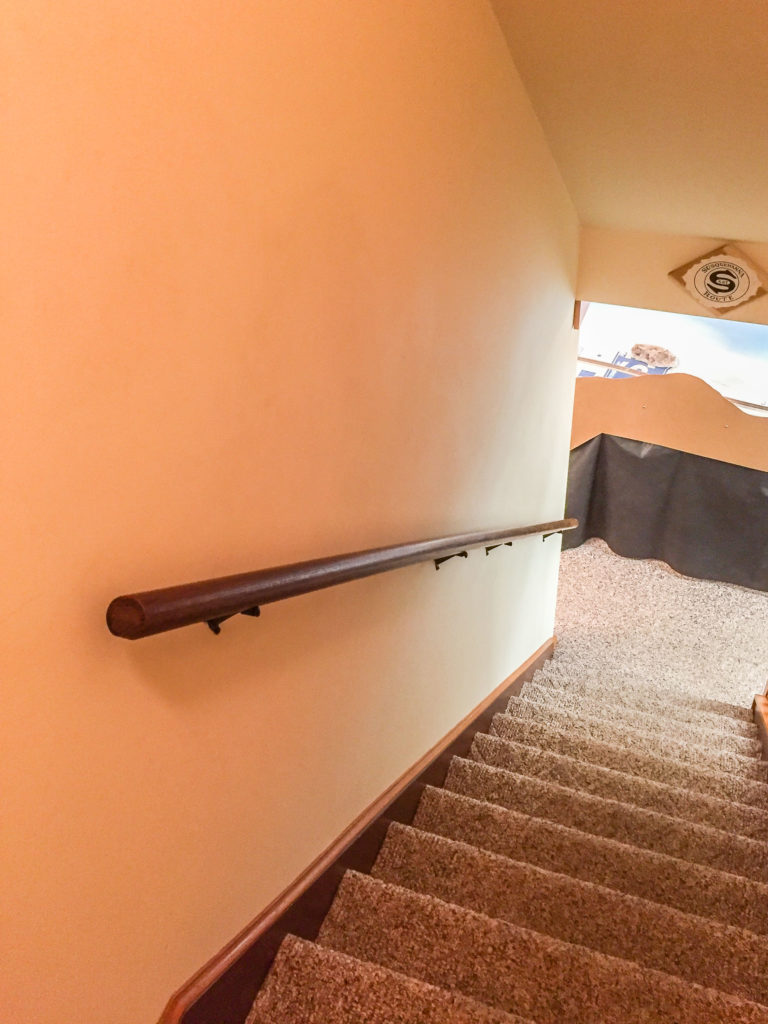
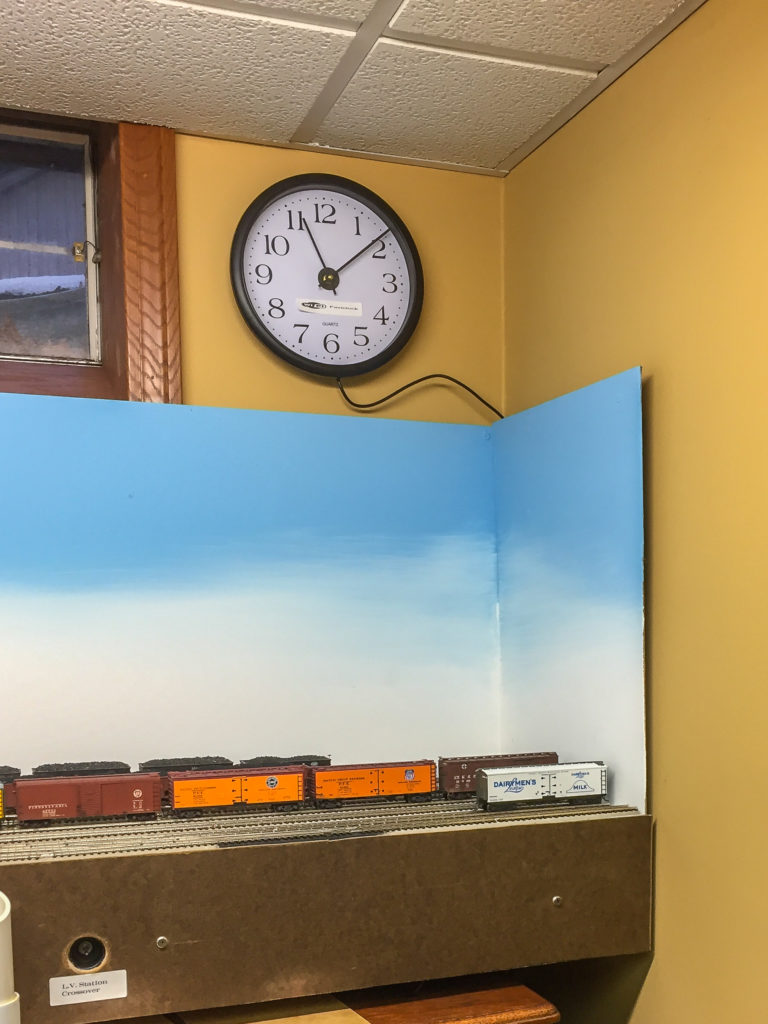
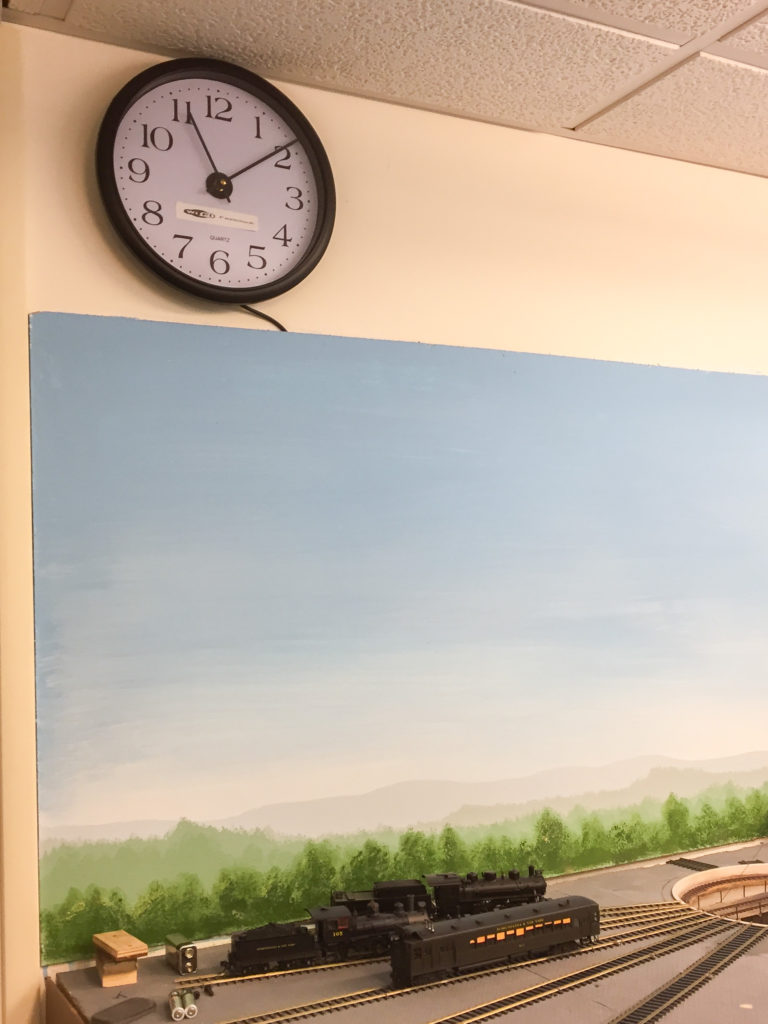
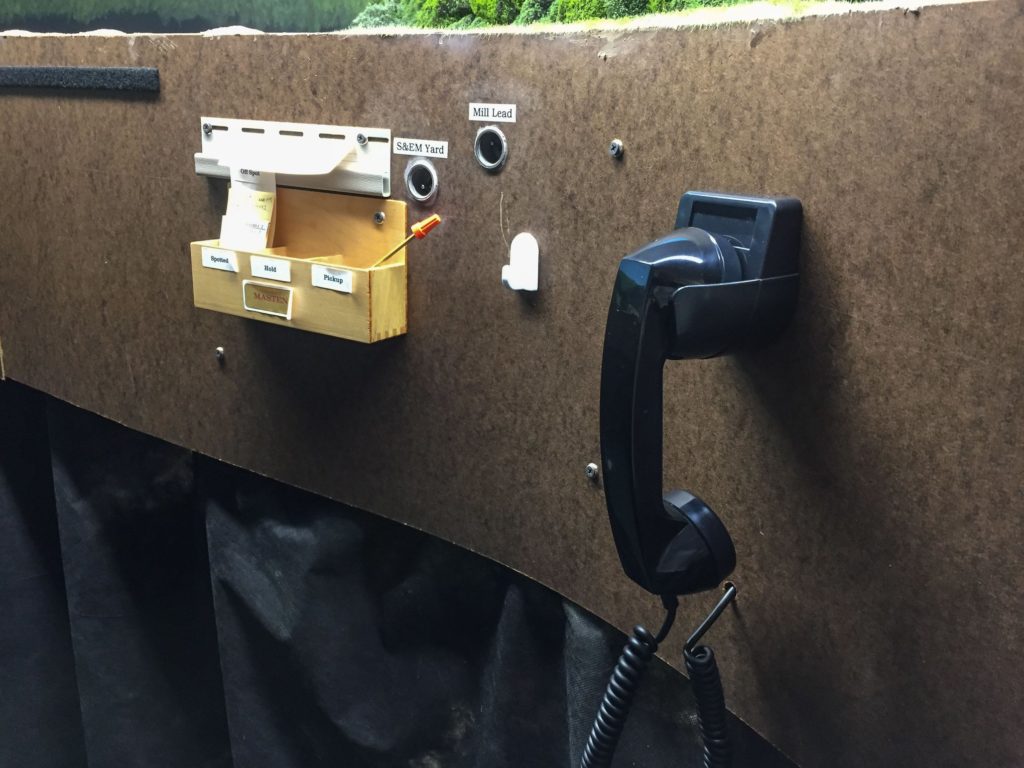
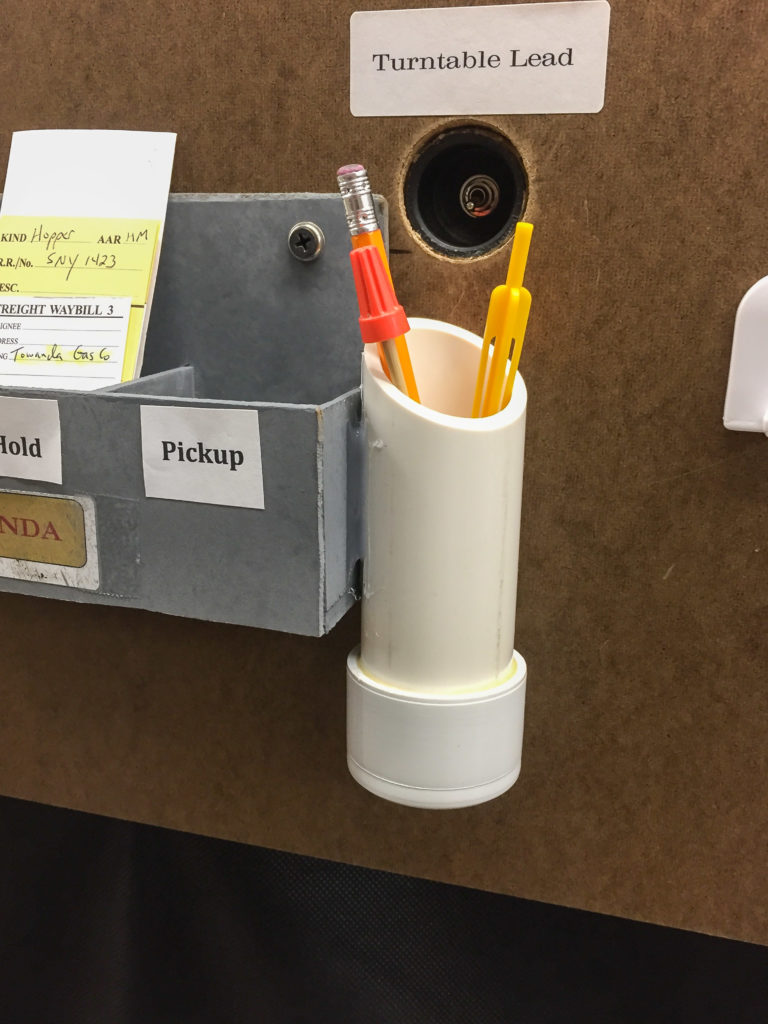
Thank you. As an occasional operator of the S&NY I appreciate the lengths you have gone to to make the railroad “operator friendly”. A list of those features would the include the throttle holders with adjoining cup holders, the recessed turnout switches (no belly bumping onto the wrong track) with labels, the car card boxes and the train specific clipboards with operating instructions.